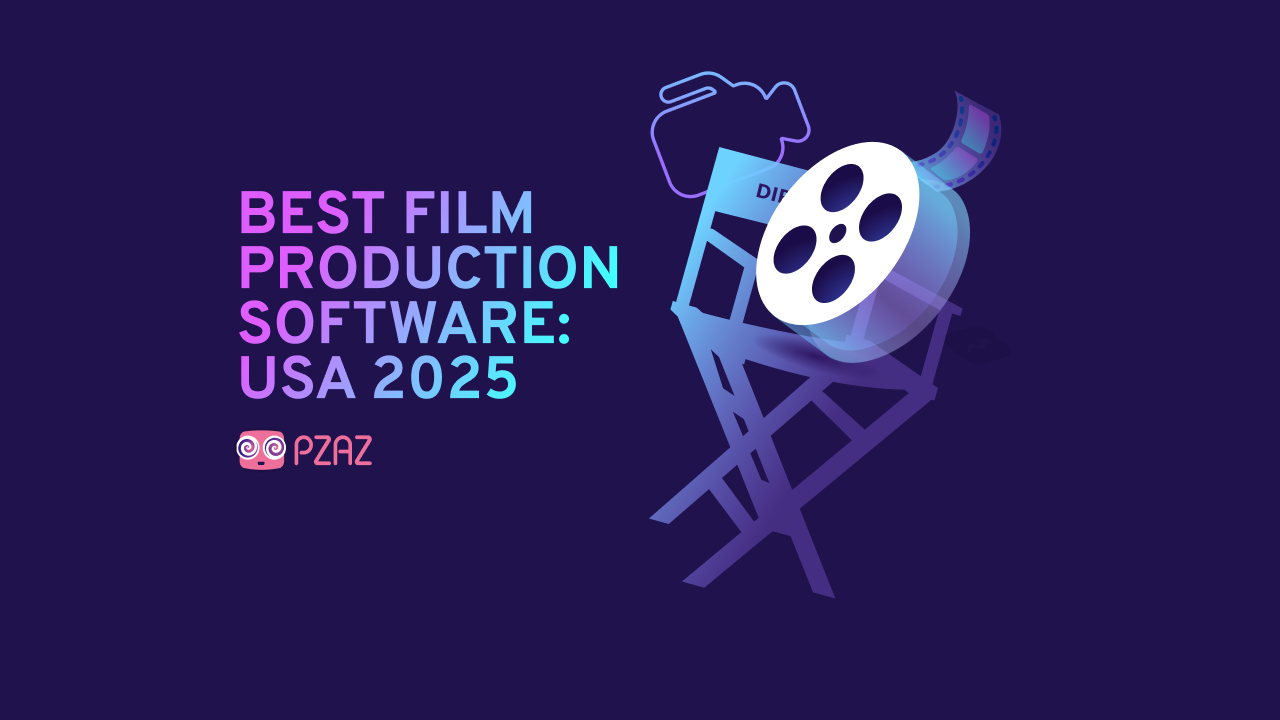The Filmmaker’s Essential Lean Plan for Success

Filmmaker’s Guide to Business Strategy: From Script to Success
In this article we have adapted the Lean Startup Plan specifically for filmmakers and TV producers, incorporating relevant examples and industry-specific challenges. While the core concepts remain the same, we’ll explore how you can apply them to navigate the unique landscape of the film and television industry.
Step 1: What do you do? Value Proposition
Let’s talk about what sets your film or TV project apart from the competition. Your value proposition describes the stories you tell, the experiences you create, and the audiences you captivate. It’s the reason why distributors, broadcasters, or festival programmers choose your project over others.
Five trigger questions to help you identify your value proposition:
- What kind of stories do you tell? (Genre, theme, style)
- Who are your target audiences? (Demographics, interests)
- What unique perspective do you bring? (Personal voice, cultural background)
- What emotional impact do you aim to achieve? (Thought-provoking, entertaining, heartwarming)
- How does your project compare to existing content? (Fresh take on a familiar trope, innovative storytelling techniques)
Examples:
Filmmaker: Ava DuVernay’s historical dramas offer powerful social commentary and diverse representation, attracting audiences seeking thought-provoking narratives with marginalised voices at the forefront.
TV Producer: Shonda Rhimes’s shows are known for their strong female leads, complex characters, and emotional storytelling, resonating with viewers looking for relatable and engaging drama.
Tip: Remember, your value proposition is not just about your film or TV show; it’s about the experience you offer audiences.
Step 2. Customer Segments + Users
Who are you making films or TV shows for? Understanding your target audience is crucial for developing content that resonates and finding distribution channels that reach them effectively.
2.1 Customer Segment
Who is your target audience? Customer segments define the viewers you want to reach.
Five trigger questions to help you identify customer segments:
- What age groups are you targeting?
- What are their interests and cultural preferences?
- What geographic regions do they reside in?
- What streaming platforms or channels do they use?
- What genres and formats do they typically watch?
Examples:
Filmmaker: A filmmaker creating a coming-of-age story might target young adults interested in independent cinema and LGBTQ+ representation.
TV Producer: A producer developing a historical documentary series might target history buffs aged 50+ who subscribe to streaming platforms like PBS Documentaries or National Geographic.
2.2: Users
Who else will be involved in bringing your project to life? Users are different from customers. They may include cast and crew, distributors, broadcasters, festival programmers, and ultimately, the audience who engages with your work.
2.3: Early Adopters
Who will be the first to champion your project? Early adopters are risk-taking individuals who embrace new voices and innovative storytelling. They can be valuable early supporters and provide crucial feedback.
Five trigger questions to help you identify early adopters:
- Who attends film festivals and art house cinemas?
- Who follows film critics and industry publications?
- Who actively seeks out diverse and independent content?
- Who participates in online film communities and discussions?
- Who has supported similar projects through crowdfunding or other initiatives?
Examples:
Filmmaker: A filmmaker with a debut feature film might target festival programmers known for showcasing emerging talent and genre-bending narratives.
TV Producer: A producer developing a sci-fi series might partner with a streaming platform known for original, high-concept content and attracting tech-savvy audiences.
Tip: By understanding your audience and the different parties involved, you can build relationships, tailor your marketing efforts, and increase your chances of success.
Step 3. Channels: Reaching Your Audience
Now that you know who you’re targeting, how will you get your film or TV show in front of them? Channels refer to the distribution platforms you’ll use to reach your audience.
3.1 Traditional Distribution:
Theatrical release: While box office revenue might not be the sole focus anymore, securing a theatrical run can generate buzz and critical acclaim, leading to further opportunities.
Television broadcast: Partnering with networks or broadcasters can provide wider reach and established viewership.
Home video sales: Though declining, physical formats like DVDs and Blu-rays can still be a revenue stream, particularly for niche audiences or collector’s editions.
3.2 Digital Distribution:
Streaming platforms: VOD platforms like Netflix, Hulu, or Amazon Prime offer global reach and flexible viewing options, though competition is fierce.
Video-on-demand (VOD) platforms: Independent platforms like Vimeo or Filmocracy cater to niche audiences and offer director’s cuts or exclusive content.
Festival screenings: Film festivals can be a launchpad for international recognition and distribution deals.
3.3 Other Channels:
Film festivals: Participating in film festivals can generate buzz, critical acclaim, and distribution deals.
Social media: Building an online presence and engaging with your audience can foster community and drive viewership.
Partnerships: Collaborating with brands, NGOs, or educational institutions can provide funding, promotion, and access to specific audiences.
Tip: Diversifying your distribution channels can mitigate risk and maximise reach. Consider a hybrid approach combining traditional and digital channels, tailoring your strategy to your budget, target audience, and project’s unique strengths.
Examples:
Filmmaker: A documentary filmmaker might secure a theatrical release in select cities, partner with a streaming platform for wider distribution, and participate in relevant film festivals to reach specific communities.
TV Producer: A producer developing a children’s animated series might partner with a major network for broadcast, offer episodes on a VOD platform for individual purchase, and leverage social media to engage with young viewers and their parents.
Tip: Remember, the key is to choose channels that align with your target audience’s viewing habits and your project’s overall goals.
Step 4. Revenue Streams: Monetizing Your Work
How will you generate income from your film or TV project? There are various revenue streams to consider, and the most effective approach might involve a combination of several.
4.1 Traditional Revenue Streams:
Box office: Ticket sales remain a major source of income for theatrical releases, though competition and audience preferences are evolving.
Television broadcast deals: Networks and broadcasters pay licensing fees for broadcast rights, with terms varying based on factors like audience size, airtime, and exclusivity.
Home video sales: While declining, physical formats like DVDs and Blu-rays can still generate revenue, particularly for niche audiences or collector’s editions.
4.2 Digital Revenue Streams:
Subscription video-on-demand (SVOD): Platforms like Netflix, Hulu, or Amazon Prime offer fixed licensing fees or revenue-sharing models based on viewership.
Transactional video-on-demand (TVOD): Platforms like iTunes or Google Play allow viewers to purchase individual episodes or seasons, potentially generating higher per-unit income.
Advertising: Integrating ads into your content can be a viable option for certain platforms and formats, though audience reception and brand alignment are crucial factors.
4.3 Other Revenue Streams:
Product placement: Integrating brands into your film or TV show can generate income while potentially enhancing realism or product awareness.
Merchandising: Selling branded merchandise like clothing, accessories, or collectables can tap into fan enthusiasm and create additional income streams.
Crowdfunding: Platforms like Kickstarter or Indiegogo can help raise funds from individual supporters, often in exchange for exclusive rewards or early access.
Tip: Diversifying your revenue streams can help mitigate risk and maximise income potential. Consider the pros and cons of each option, negotiate favourable terms, and track your results to refine your strategy over time.
Examples:
Filmmaker: A filmmaker with a limited theatrical release might leverage SVOD platforms for wider distribution, offer digital downloads on TVOD platforms, and partner with relevant brands for product placement to generate additional income.
TV Producer: A producer developing a children’s animated series might secure a broadcast deal with a network, offer episodes on a VOD platform for individual purchase, sell branded merchandise to young fans, and potentially integrate educational content sponsored by relevant organisations.
Tip: Remember, the best revenue strategy should align with your budget, target audience, project’s format, and distribution channels. Analyse different options, negotiate effectively and adapt your approach based on market trends and audience preferences.
Step 5. Competition: Navigating the Landscape
The film and television industry is marked by its fierce competition, a challenging environment where preparation and strategy are key to success. In the next section, we delve into navigating this competitive terrain, providing you with the tools and knowledge to distinguish yourself in a crowded field.
5.1 Identify Your Competitors:
Direct competitors: Films or TV shows with similar themes, genres, or target audiences.
Indirect competitors: Any content vying for viewers’ attention, including other forms of entertainment or leisure activities.
Examples:
Filmmaker: A filmmaker creating a coming-of-age story about a young immigrant might compete directly with other independent films on similar themes, but also face indirect competition from mainstream teen comedies or streaming series targeting the same demographic.
TV Producer: A producer developing a historical drama series might compete directly with other period dramas on major networks, but also face indirect competition from reality TV shows or true-crime documentaries vying for viewers’ attention during primetime slots.
5.2 Analyze Your Strengths and Weaknesses:
Strengths: Unique story, talented cast and crew, established relationships, innovative marketing strategy.
Weaknesses: Limited budget, unknown talent, niche genre, lack of distribution experience.
5.3 Differentiate Yourself:
Find your niche: Identify a specific audience or theme that sets you apart from the competition.
Highlight your unique strengths: Promote your story’s originality, cast’s talent, or director’s vision.
Build your brand: Develop a recognisable identity and online presence.
5.4 Network and Build Relationships:
Connect with industry professionals: Attend festivals, conferences, and workshops.
Collaborate with other creators: Share resources, expertise, and audiences.
Seek mentors and advisors: Learn from experienced individuals.
Examples:
Filmmaker: A filmmaker with a limited budget might leverage social media effectively to build a strong online community, participate in relevant film festivals to gain exposure, and collaborate with other independent filmmakers for marketing and distribution resources.
TV Producer: A producer developing a show with a diverse cast might partner with organisations representing the community depicted, attend industry conferences focused on diversity and inclusion, and actively network with established producers and showrunners for mentorship and potential collaborations.
Tip: Remember, competition is inevitable, but by understanding your strengths, weaknesses, and the competitive landscape, you can develop a strategic approach to stand out and find your audience.
Step 6. Partnerships: Leveraging Collaboration for Success
In the competitive world of film and television, collaboration can be a powerful tool. Here’s how to leverage partnerships for success:
6.1 Identify Potential Partners:
Complementary skillsets: Look for partners who bring expertise you lack, like experienced producers, distributors, or marketing agencies.
Shared target audiences: Collaborate with brands, organisations, or influencers relevant to your project’s theme and target viewers.
Co-production opportunities: Partner with international studios or filmmakers to share resources, funding, and access to new markets.
Examples:
Filmmaker: A filmmaker creating a documentary about climate change might partner with an environmental NGO to gain access to experts and locations, leverage their audience outreach, and potentially secure co-funding opportunities.
TV Producer: A producer developing a historical drama series might partner with a museum to access historical artefacts and expertise, co-develop educational content, and potentially cross-promote each other’s offerings to relevant audiences.
6.2 Negotiate Win-Win Agreements:
Clearly define roles and responsibilities: Ensure each partner understands their contributions and benefits.
Agree on intellectual property rights: Establish ownership and usage rights for the content created through the partnership.
Set measurable goals and timelines: Track progress and ensure everyone is aligned on expectations.
6.3 Leverage the Partnership Effectively:
Promote collaboration: Generate buzz through joint marketing efforts and public appearances.
Cross-promote each other’s platforms: Expand reach and audience engagement through shared channels.
Learn and grow from each other: Share expertise, resources, and best practices for mutual benefit.
Examples:
Filmmaker: A filmmaker partnering with a brand for product placement might leverage the brand’s social media channels to promote the film, co-create exclusive content, and offer branded merchandise to the audience.
TV Producer: A producer partnering with a streaming platform might co-develop marketing campaigns tailored to specific audience segments, leverage the platform’s recommendation algorithms for targeted promotion, and utilise their data insights to inform future content creation.
Tip: Remember, successful partnerships are built on trust, mutual respect, and shared goals. Choose partners who align with your values and vision, negotiate effectively, and leverage the collaboration to achieve your objectives together.
Step 7. Measuring Success: Beyond the Numbers
Success in film and television isn’t just about box office numbers or ratings. It’s about achieving your goals and making an impact. Here are some key metrics to consider:
Artistic impact: Critical acclaim, awards recognition, industry buzz, and audience engagement with the film’s themes and message.
Commercial success: Box office revenue, streaming viewership, merchandise sales, and overall profitability of the project.
Cultural impact: Sparking conversations, influencing social change, and leaving a lasting impression on viewers.
Career development: Building relationships, gaining experience, and opening doors to future opportunities.
Tip: Define your own success metrics based on your project’s goals and target audience. Don’t rely solely on industry standards. Track your progress over time and adapt your strategy as needed.
Examples:
Filmmaker: A filmmaker might define success by the film’s impact on social justice movements, participation in prestigious film festivals, and positive reviews from diverse critics.
TV Producer: A producer might consider success based on the show’s ratings among its target demographic, renewal for future seasons, and its ability to spark conversations and inspire action on a specific issue.
Tip: Remember, success is a multifaceted concept. Be clear about your goals, track relevant metrics, and celebrate your achievements along the way.
Step 8. What it Costs: Budgeting for Success
Creating a realistic budget is crucial for any film or TV project. Consider the following categories:
Pre-production: Script development, casting, location scouting, equipment rentals, crew salaries.
Production: Filming costs, travel and accommodation, catering, insurance.
Post-production: Editing, visual effects, sound design, music licensing, marketing and distribution.
Tip: Thoroughly research industry benchmarks and adjust based on your project’s specific needs. Seek funding from investors, grants, or crowdfunding campaigns. Be transparent with collaborators and manage your budget effectively.
Examples:
Filmmaker: A low-budget independent film might prioritise script development and utilise guerilla filmmaking techniques to keep production costs down.
TV Producer: A high-budget historical drama series might require extensive set construction, costume design, and visual effects, impacting the overall budget significantly.
Tip: Remember, budgeting is an ongoing process. Be prepared to adapt to unforeseen circumstances and stay within your financial limitations.
Step 9. What You Will Make: Revenue Streams and Strategies
Generating income is essential for the sustainability of your film or TV project. Explore various revenue streams:
Traditional: Box office, television broadcast deals, home video sales.
Digital: Streaming platforms, downloads, subscriptions, advertising.
Alternative: Product placement, merchandise, crowdfunding, sponsorships.
Tip: Diversify your revenue streams to mitigate risk and maximise income potential. Negotiate favourable terms with distributors and partners. Analyse your results and adapt your strategy based on market trends and audience preferences.
Examples:
Filmmaker: A filmmaker with a limited theatrical release might leverage streaming platforms, offer exclusive content through crowdfunding rewards, and partner with relevant brands for product placement to generate additional income.
TV Producer: A producer developing a children’s animated series might secure a broadcast deal, offer episodes on a VOD platform, sell branded merchandise, and potentially integrate educational content sponsored by relevant organisations
Tip: Remember, a successful revenue strategy aligns with your project’s format, target audience, and distribution channels. Be creative, negotiate effectively, and adapt your approach based on market trends and audience preferences.
I hope this helps! Remember, this is just a starting point. Feel free to add your own insights, examples, and specific questions you have for each chapter. The more details you provide, the more I can tailor the content to your specific needs.
Best Film Screenwriting Software US in 2025
Find out what independent filmmakers want most in screenwriting software—from AI tools and cloud storage to collaboration features and bold design—and see how creative needs are shaping the future of writing platforms.
Best Film Production Software: USA 2025
Find out what filmmakers value most in their software tools, from editing support to progress tracking and post-production help, and learn why Pzaz is the ultimate creative partner in bringing your stories to life.


